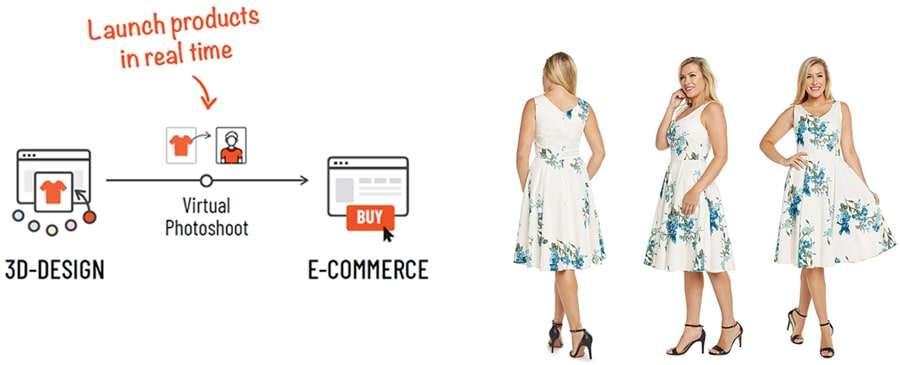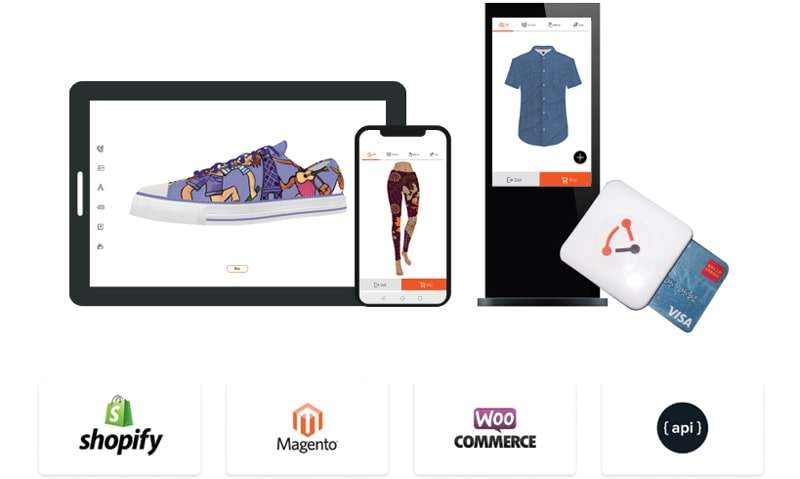
We are in the era of personalisation and it is transforming the way customers get engaged with a brand. According to the research company Accenture , 90 per cent of the customers today say that they are more likely to buy a product that offers personalisation and recommendation specific to the customers. When we say mass-customisation or on-demand manufacturing, typically what comes to mind is the consumer level customisation – a consumer designs a product from scratch and has it custom-made. With customisation, a consumer really ‘owns’ the product and it greatly reduces the purchase friction and product return. Since the products are made after purchase, resources aren’t wasted on inventory either.
The use of technology and software can help brands take products from purchase of raw material to production line rapidly. These technologies provide tools to help visualise, create product catalogues virtually, design, collaborate and sell using online commerce. There are a number of technological solutions and value-adding techniques like 3D for design creation and digital and screen printing that the brands can opt for to integrate mass customisation and on-demand manufacturing into their production capabilities.
The on-demand business model removes inefficiencies like long and expensive design to production cycle and opens a new world of small batch manufacturing. It allows creation of design and making them available in the market in real time. It helps in eliminating the need to have inventory; for example, the recent demand for face masks. There is an endless variety of them being made, but due to the difficulty involved in anticipating how long the need for masks will continue, or at what rate, the traditional model of producing and keeping stock does not work. The same is true if a brand wants to experiment with new styles, colours or sizes, but doesn’t know what the demand is going to be, or wants to iterate faster with new designs. All of these fall under the broad umbrella of mass-customisation, even though there is no consumer level customisation involved at all.
Also Read : Managing product catalogues on multiple online marketplaces
Technologies for mass personalisation and on-demand manufacturing
With the concept of personalisation picking up with consumers both in the mass and luxury markets, many companies are looking to provide the perfect technology for implementation. vPersonalize , which has operations in the United States and India, is among the leaders, as it helps the apparel industry with a combination of technology, automation, AI and CAD. The company’s mass personalisation and on-demand patented solutions help the brands and manufacturers in bringing a design faster to the market and making it on demand.
Its product portfolio includes various solutions like Real 3D designer, production-ready pattern, integrated design, share and sell, advance product designer and widest product coverage – all to help retailers and brands streamline their customisation and on-demand manufacturing process.

The integrated solution from the company can help brands in the quick creation of design and bringing that to production. The 3D designer is a tool for easy online design creation of products. It offers a platform where the designers can create and communicate with their team members and customers for feedback on the design. The 3D designs can either be shared with the customers or can be allowed to create their own design using intuitive 3D controls which allow them to personalise the pre-made design for quick changes of colour, text and logos.
“At the simplest, it is just taking an artwork and wrapping it on the 3D model and the software does everything including flow the design accurately over seams. The mobile version even allows one to take a picture and do this with a single click. At the other end of the spectrum, you have very complex sports uniforms where the logo or team lettering has to be an exact width or height at a particular size and colour matched all the way to print,” mentioned Bala Selvarajan, Founder& CEO, vPersonalize Inc . It has wide area of application from clothing, bags, shoes, interactive bike builders, car wraps, sportswear, etc.
The automatic pattern generation tool then creates production-ready patterns with the customer’s design graded to the size, adjusted for shrink and roll out width. These patterns can be printed directly on most of the printers and with all RIP software. This cuts down the extra time involved in doing the process manually. The factories can instantly download the auto-graded, nested, print-ready patterns right from their dashboards as soon as an order is received. “This all adds up to a lot of time saved. For example, print a logo across the front zipper of a hoodie, with a ¾ inch seam and do it correctly across all sizes, every single time. This is the time a graphics team can spend constructively, creating more SKUs, and thereby, increasing sales, instead of spending time on these mundane tasks,” explained Selvarajan.
The retailers and brands can further offer personalisation with the patented AI-based automated cross product designer that allows customers to visualise a design from one product to another automatically (for example,jersey to backpack or women to kids) at the point of sale. The personalisation can be done on any of the existing designs. The solution can help achieve an increase of 400 per cent in the conversion rate and order value. Moreover, the automated catalogue generator creates an entire product page automatically with the product image, size charts and product variants (size, colour and material).
“If taking a design and creating six sizes take 15 minutes each, that is one and a half hours saved with our auto size grader! If there is a 25-member team roster that one can consistently produce at the rate of one AI file every 10 minutes, that is still 250 minutes saved! We have four granted patents and multiple patents pending on these and related technologies,” said Selvarajan.
The other benefit for retailers is ‘Real Time Commerce’. The cloud-based solution helps brands to manage their products and designs digitally. The products can be automatically uploaded (2D renders or 3D live) to any e-commerce platform with a single click. This allows the brands to quickly share designs with customers and take orders. Moreover, the software also supports virtual photoshoots. Brands can create thousands of SKUs in real-time and instantly get those products in front of their customers and start selling. The solution also provides ready plug-ins for Shopify, Magento and WooCommerce.

Faster market time with no additional inventory
The integration of the solution will allow the brands to experiment with a large variety of new designs and sizes without having to carry actual inventory, and thereby, understand customer taste and preferences directly. It uses targeted, small batch manufacturing to minimise inventory by stocking store-specific designs, sizes and styles, and it promises of mass customisation, as it allows to broaden the product line, bringing designs to market significantly faster – all without carrying additional inventory.
The software does not have any specific hardware or software requirement. The cloud-based solution can work on almost any platform (Windows, Mac, mobile, iOS, Android, retail kiosks) and can be accessed from any device, anywhere.
“We will continue to focus on apparel brands and manufacturers, helping solve some of the key technical challenges that are specific to them. In all of this, the common theme is to help our customers bring designs to market considerably faster and to help them manufacture those products on-demand,” concluded Selvarajan.
Also Read : Connected factories or robotic automation: What to choose and why?

Post a Comment